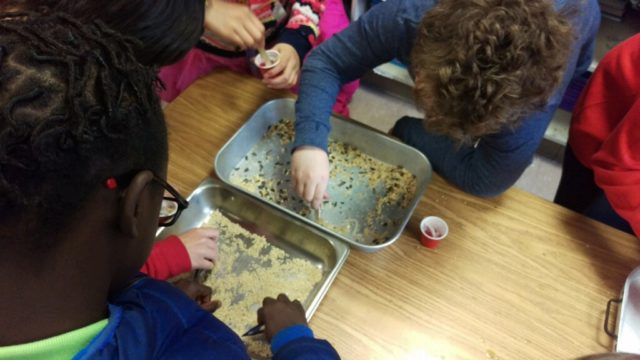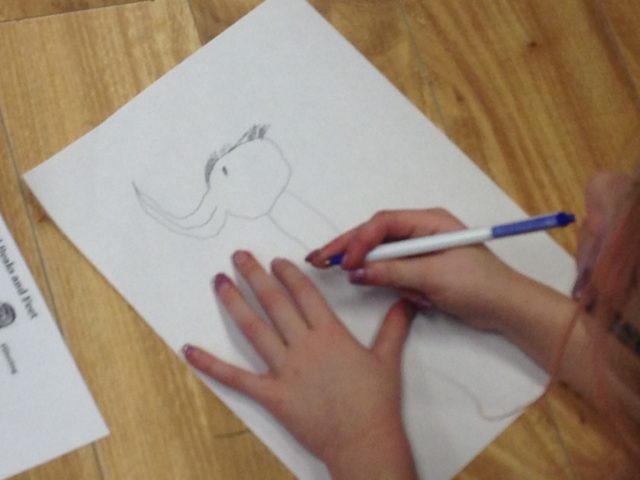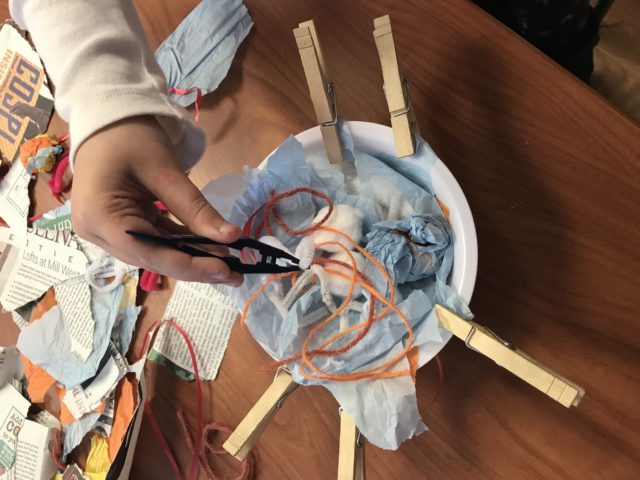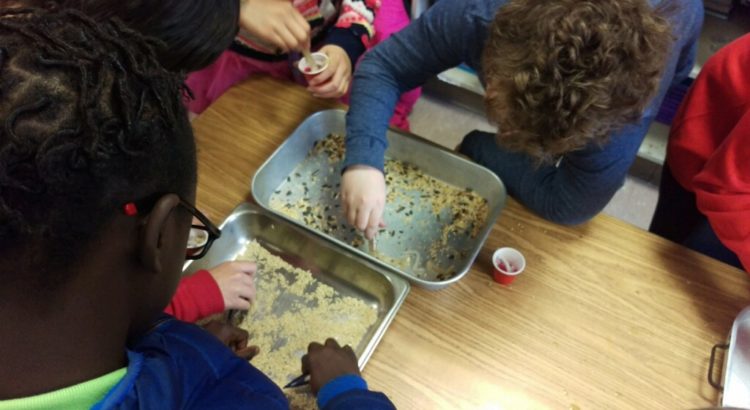By: Kim Snyder 2018 Student Conservation Association NH AmeriCorps Member
Birds are everywhere and Manchester’s 4th graders are a few steps closer to understanding these fascinating creatures.
In the past few weeks, the Student Conservation Association has been teaching these students about how organisms are adapted to best survive in their environment. Manchester’s students have discovered how New Hampshire’s trees survive the winter and examined how various furbearers prepare themselves for long cold nights. Birds were just the next step for them.
First, the students experimented with some various bird “beaks”. Using tweezers, straws, tea diffusers, and clothespins, they collected “food items” (beads, seeds, rice, water) to see how collecting varied with the design of their beak. For some, it was easy to collect most things (the tweezers). For others, they were specialized to collect only one thing (the straw to gather water).

After learning about some of the variations of beaks, wing shape, and feet that birds use in various New Hampshire environments, the students were given a chance to “make their own bird” using what they had learned. Some chose to name their creation.
One participant’s bird was named “Squeakum”. The bird lived in Manchester and used its swift-like wings to navigate between buildings and around cars.

The result of this knowledge of adaptations coupled with their imaginations was often a delightful mishmash of everything from a duck to an eagle. Students combined raptor claws with duck bills to give their creation an edge over the fish and frogs that they chased and ate. Others focused more on the wings, giving their birds broad soaring wings so they could successfully soar over the forests they lived in.
Some even went as far as to provide their birds with multiple foot or beak adaptations with one student giving their bird a duck bill that ended in a sharp hook so they could eat both meat and vegetation.
“I wanted my bird to be able to eat whatever it could find,” this student said, “so I gave it a duck bill with an eagle’s hooked end.”
Afterschool students showed off their creativity as well, using the bird “beaks” in pairs to collect materials and construct a nest. Many of them remarked how difficult it was to only use tweezers instead of their hands. Nevertheless, they persisted and constructed some remarkable homes.

No doubt the ingenuity and possibility of bird diversity has captured the imaginations of these 4th graders.

